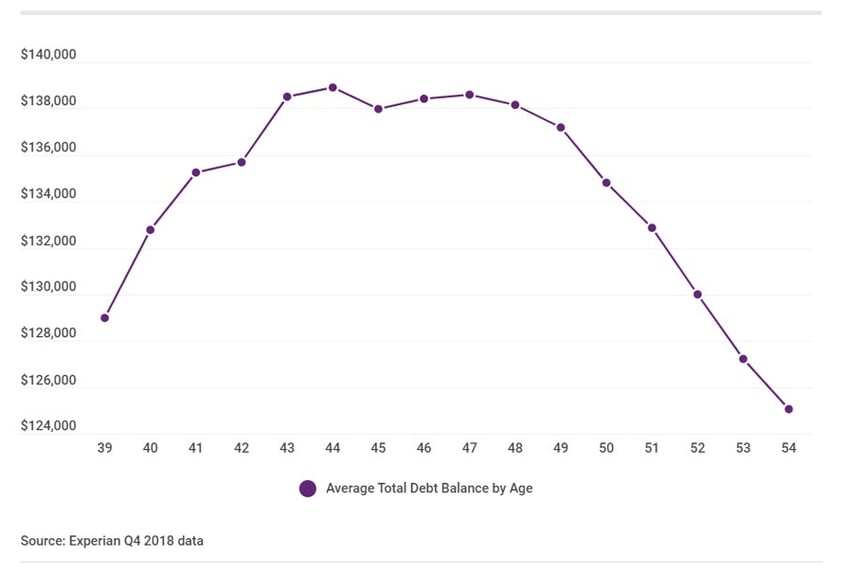The baby boomer generation has been the bread and butter of retirement planning businesses for a long time. However, it’s now time to look to the next cohort with retirement in their sights: Gen X. Financial advisors are starting to realize that Gen Xers are uniquely positioned to benefit from their services.
But is it worth it to target one of the smallest generations in the U.S.? And what will it take to attract new clients in this age cohort?
Who is ‘Generation X?’
The generation defined by independence, resourcefulness, and resistance to societal norms is currently at the peak of their wealth-creating years. Born between roughly 1965 and 1980, the age range of Gen X is 42-57 years old as of 2022.
The “forgotten generation” was raised at a time of significant cultural change and upheaval. Think about rising divorce rates, Watergate, the Cold War, the AIDs crisis, in addition to extreme financial events like the Crash of ‘87, the dot-com bubble in 2000, and the Great Recession. Conditions like these have made many Gen Xers deeply skeptical and self-reliant. A typical member of the cohort will be family-oriented and financially responsible.
Many Gen Xers are currently facing enormous financial pressures, too — caring for their children at the same time as at least one parent, all while planning for their own retirement. This has led them to seek guidance on how to balance these responsibilities and achieve their financial goals.
Why should financial advisors start marketing to Gen X?
Gen X may be smaller than other generations, but their wallets are mighty.
- Forbes reports that this generation currently accounts for 31% of total U.S. income, even though they make up only 25% of the population.
- Gen Xers will inherit a “significant share of the $24 trillion expected to be passed down in the next decade,” according to a new study by T. Rowe Price.
- Firms with the highest revenue growth have the largest percentage of clients under 55 (Gen X runs up to age 57 as of 2022).
- Deloitte predicts that Gen X’s share of national wealth will have the highest increase through 2030 — from less than 14% of total U.S. net wealth in 2015 to nearly 31% by 2030.
- Experian finds that overall debt levels begin to decrease after age 47, freeing up more income for retirement planning. Two-thirds of Gen X are over that hump.

Source: Experian
5 tips for marketing to Gen X about retirement planning:
1. Understand the financial pain points that motivate them.
Gen Xers have a wide range of financial concerns, including:
- Saving for retirement
- Paying down their debts
- Caring for parents
- Saving for childrens’ college
An alarming 44% of Gen X members are not confident that they can save enough to retire, and they’re also the generation that currently carries the highest average debt of all generations. They must balance these stresses with supporting aging parents and setting their own children up for success. Advice on how to achieve these goals will be well received.
2. Center your message on security and stability.
Most Gen Xers are raising families and want to make educated decisions about family finances. This is also a generation with strong family values but a distrust of institutions, and they place a high premium on trust. If you can demonstrate that you are credible and your services are reliable, this goes a long way.
Consider offering financial education courses to establish your expertise and give Gen Xers a firsthand look at the value of financial planning for retirement. Referrals also work well.
3. Be personal, authentic, and jargon-free.
Studies show that financial jargon does not resonate well with pre-retirement age investors. The Gen X cohort is highly skeptical of sales tactics and prefers brands that are authentic and straightforward. Steer clear of terms like “portfolio,” “time horizon,” or “risk management” and embrace language more like “prepare for your future,” “goals-based,” or “protect your finances.” Response Media suggests your mantra for targeting Gen X should be keep it simple and make it easy.
4. Appeal to DIY sensibilities.
The so-called latchkey generation prefers how-to content that allows them to self-start and go at their own pace. Thinkwithgoogle found that this “sense of independence and willingness to self-start” is especially relevant now that Gen Xers are “at a place in their lives where they have the means and time to invest in their surroundings, their personal appearance, as well as their health and wellbeing.” Educational self-help content or retirement planning courses are ideal marketing tools for a generation of DIY-ers.
5. Factor the internet into your marketing strategy.
Generation X tends to do research on the internet even after watching a commercial or seeing a print advertisement, such as a mailer. They also spend even more time per week on all devices than Millenials — 21 hours on smartphones, 9 on PCs, and 4 on tablets. Google and social media ads are a strong investment, and virtual financial education courses are a perfect complement to in-person workshops on retirement planning.
Need more insights? Connect with FMT.
Our turnkey program for financial education handles the heavy lifting while you focus on growing your business. We can help you get started marketing to Gen X in these critical pre-retirement years where your services are best positioned to help this cohort succeed.

This article was originally published in January, 2022. Updated January, 2023.